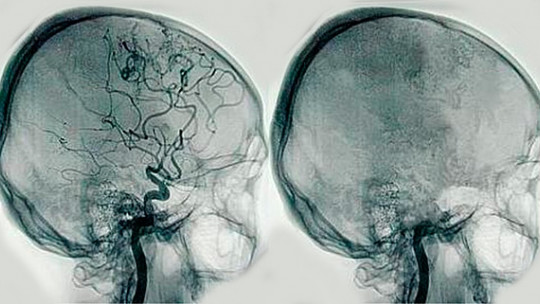For most people, life is not a pool of calm, undisturbed water. It is common for its flow to be more like a river, full of pronounced meanders and sections where the flow intensifies and decays, at an inconstant and unpredictable pace.
Letting yourself be carried away by such a current implies avoiding the obstacles that will generally arrive, with the purpose of continuing sailing beyond the horizon. And the fact is that, by assuming the helm of our own existence, we inevitably accept to face the ups and downs inherent to its nature.
This circumstance is complex; and is closely related to personal and social intricacies as diverse as family life, studies, work, etc. Problems in any of them can be the reason for what we know as emotional discomfort
In this article we will delve deeper, specifically, into what this emotional discomfort is. Where it comes from and how it usually manifests itself, as well as the impact it has on the daily life of those who suffer from it. In the last part we will talk about its therapeutic approach.
What is emotional distress
Emotional distress is an extensive and complex concept, which has been widely used in clinical and research settings, but which many times it has not been defined in a clear and operational way For this reason, sometimes there is a certain “confusion” when trying to refer to it, and the limits that separate it from what amounts to a psychological disorder are even diluted. And it is true that the vast majority of problems in the area of mental health involve some degree of emotional discomfort (light, severe, etc.), but the isolated presence of the latter does not always imply psychopathology.
Thus, the first approach to this concept involves recognizing that the subjective experience of emotional discomfort does not mean in any way that the individual is going through some mental disorder, but simply that is affectively representing everyday situations that cause some suffering or concern In this case, the affective response would not reach the intensity necessary to satisfy the diagnostic criteria required in the current manuals (as would be the case of the DSM-5), although this does not prevent one from living with embarrassment and regret.
Those who suffer emotional discomfort explicitly use phrases such as “I feel bad”, “I’m down” or “I feel flat” to describe their experience; which is usually the result of some isolated and recognizable event or the accumulation of several of them in a discrete period of time. In any case, a deterioration in the feeling of well-being is indicated compared to a previous moment, and in general the subject perceives himself as deprived of the joy that he was once able to feel in his own skin. On some occasions it is not possible to identify what the trigger was, which adds a certain disorientation.
When the sensations go deeper beyond the emotional, the existence of physical symptoms for which no explanatory organic root can be found is frequently reported. The most notable are headaches, digestive disorders (such as diarrhea or constipation) and certain muscle discomfort. All of this warrants a physical examination that rarely provides a finding capable of identifying them, and that very usually precipitates the planning of symptomatic approaches that do not address the “core” of what really motivates them (use of analgesics or anxiolytics with muscle-relaxing properties, for example). .
These indefinite and diffuse physical symptoms can be accompanied by intimate nuances of enormous existential importance , such as sadness, the shadow of an “inner emptiness” that causes restlessness and a constant experience of nervousness or irritability. As time passes, it is common for worry to increase and other problems to arise, such as insomnia or persistent fatigue. It is at such an evolutionary point of emotional distress where there is a greater risk of it transcending into a more structured psychopathological picture of greater clinical relevance (especially depression and anxiety).
This is such a prevalent problem that it has been estimated (according to various studies) that 30% to 60% of people who see their primary care doctor are experiencing it It is more frequent in women than in men (70% in the first case), considering that this discrepancy is due to different ways of treating emotions and the potential existence of different stressors between both groups (they are more “involved” in care tasks. that are added to their job responsibility, eg).
It is common that the problem cannot be detected in time so that it becomes firmly established or progresses to a complete disorder, in addition to motivating hyper-frequent visits to the family doctor or other specialists.
Why does emotional distress occur?
As can be seen, living with such emotional discomfort results in a severe erosion of the quality of life and of all the dimensions that make up the reality of the human being: from the social to the individual, passing through the vital areas in which both participate (such as academic or work). What is really true is that, despite not being a disorder as such, the symptom at hand also precipitates a deterioration in self-image that alters the normal development of personally significant projects.
Below we review just some of the basic reasons why a person could suffer from such a circumstance. However, it must be noted that Its potential causes are virtually infinite since they depend on the way in which the individual constructs his or her own world.
1. Academic problems
Academic problems generate emotional distress, especially during adolescence , since it is the evolutionary period in which failures in this area can have the greatest impact on well-being. The difficulty in obtaining the desired results (grades), the belief that there are not enough resources to face the progressive demands of the educational system or doubts when choosing the curricular itinerary, are frequent causes of suffering in this maturation stage. Also the excessive burden of responsibility, and the periodic evaluation of performance (exams or presentations to colleagues), can trigger it.
2. Work problems
The workplace has been, especially in recent years, a clear cause of emotional discomfort for millions of people around the world. From the barriers that young people must overcome to access stable jobs, to the endless situation of unemployment in which countless people are immersed in their fifth decade of life.
Also It is common that circumstances such as precariousness, overload in the workplace or insufficient salaries (depending on the growth in the cost of living) can be erected as reasons for such suffering.
3. Family problems
The presence of very diverse types of family problems, but especially conflicts between group members, generate a lot of emotional pain for the people involved.
Among such situations there may be material or energy deficiencies, difficulties in accessing housing, psychological or organic disorders in any of the people who are part of the unit or discussions between the parties that do not find any point of agreement based on the which to solve. Also, finally, emotional discomfort is common in cases where the distribution of tasks is unfair or unbalanced.
4. Relationship problems
Relational problems, in the event that common strategies to deal with adversity have not been consolidated , could be a tacit cause of emotional distress. In this case, an endless number of variables participate, which are related to the satisfaction of romantic expectations or disagreements over important aspects of coexistence.
Maintaining an unsatisfactory bond due to fear of loneliness, or any other additional cause (not causing pain to someone you appreciate, for example), is one of the reasons why this situation most commonly emerges within a bond. dyadic.
5. Excess responsibility
Situations of family, work or personal overload were postulated for a long time (and continue to be today) as one of the factors underlying women’s heightened risk of reporting emotional distress.
And it is very true that the intimate perception that our responsibilities exceed our resources, or that the tasks that are “required” of us come into direct opposition to each other, connect directly with the phenomenon. This is accentuated when the person is also forced to give up leisure or recreation time.
6. Social problems
The difficulties in establishing quality relationships with our peer group, or with the work team, are very frequently pointed out as very powerful triggers for the problem at hand. The reluctance to ask for help, or to request collaboration, may also be at its basis.
In any case, today It is known that an insufficient social support network is an extraordinary risk factor regarding emotional discomfort, as well as unwanted loneliness (“imposed” by circumstances). Experiences of rejection, uprooting or ostracism also generate emotional anxiety.
7. Health problems
Health problems, and more specifically serious/chronic diseases, have emerged in recent years as the area of life in which emotional distress has most commonly been investigated.
We know that the diagnosis of a relevant pathology, the process of health recovery, the use of certain drugs (chemotherapy, for example) and the adaptations in daily roles, involve a succession of personal challenges in which an internal struggle comes together. . In cases where this discomfort reaches the level of a mental disorder, the participation of a health psychologist is unavoidable
How can it be addressed?
All the situations that have been shown in the previous lines potentially generate significant psychological suffering. Although in the first moments this does not reach the intensity necessary to be considered a psychological disorder, it is expected to evolve into a condition of anxiety or depression if an adequate therapeutic approach is not articulated. It is because of that It is very important to seek the guidance of a professional adequately trained in mental health to make a good diagnosis and its corresponding treatment.
Increasing knowledge about emotions, and learning to regulate the way they are experienced, is a key objective of intervention in this context. It translates into a greater ability to recognize, identify, discriminate, repair, communicate and use each of them; so that the management of internal experiences is optimized. From this the person acquires the ability to delve deeper into their needs and desires, this being an essential first step to building a comfortable daily life.
In addition, it may be interesting to teach procedures aimed at solving problems, since sometimes “bad” choices have functioned as an element of support for the adverse situation that may be experienced. Such strategies usually affect the description of the problem, the generation of alternatives, the assessment of all avenues of action and the commitment to the solution that has been selected. This technique has proven to be effective as a resource for preventing depression or anxiety in the case of people in specific situations of vulnerability.
Finally, enhancing the social skills available to the person (and especially assertiveness) helps to significantly reduce emotional discomfort. Through a program like this it is possible to provide the individual with appropriate communication skills, so that he can successfully mediate in all negotiation situations whose objective is the alleviation of responsibilities or the search for an agreement with which to solve a problem. a persistent conflict.









